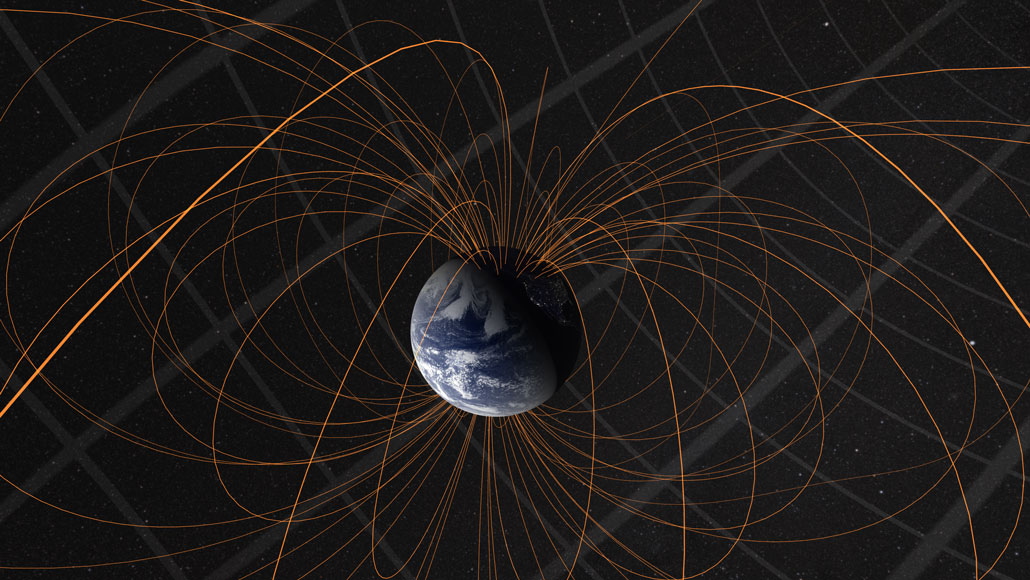An ancient magma ocean may have once driven Earth’s magnetic field
Molten silicate might solve a long-standing magnetic mystery

Today, Earth’s magnetic field (visualized) is powered by electrically conductive fluid in the outer core. Billions of years ago, a churning, buried sea of magma circling the nascent core may have been responsible.
NASA's Scientific Visualization Studio/JPL-NAIF







